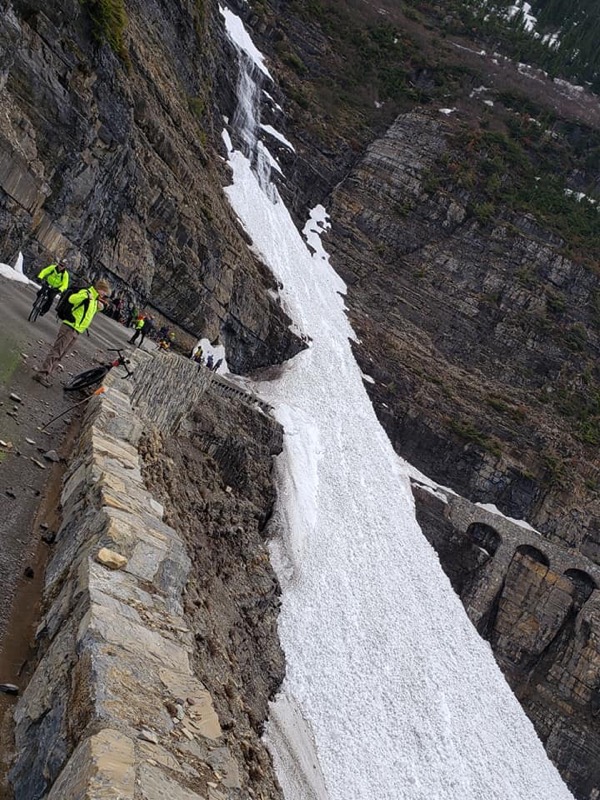News Release
You are viewing ARCHIVED content published online before January 20, 2025.
Please note that this content is NOT UPDATED, and links may not work. For current information,
visit https://www.nps.gov/aboutus/news/index.htm.

Mary Marsh
|
Subscribe
|
Contact: For Media Inquiries, 406-888-5838
Contact: For Visitor Inquiries, 406-888-7800
West Glacier, MT – On Monday, significant avalanche activity at Triple Arches on the Going-to-the-Sun Road trapped thirteen cyclists on the far side of avalanche debris and left them unable to return down the mountain for a number of hours. No injuries were reported.Earlier Monday, the park had closed the road to pedestrian and cyclist traffic at the Loop after a separate significant rock slide blocked the road and prevented emergency vehicle travel. However, many cyclists were already beyond the road closure at that point. Two Glacier National Park volunteer bike patrol units were also up the road, though on the west side of the avalanche slide area. They relayed the call for help to park dispatch, and stayed in the area for more than four hours until park rangers gained access to the scene.
A park road crew cleared the rock slide, and began cutting a path through the avalanche debris to open the way for the stranded cyclists. Avalanche forecasters with the U.S. Geological Survey also assessed the avalanche area and slope above.
The snow stabilized after several hours, allowing crews to work safely and reach the cyclists. Conditions often do stabilize after a period of hours, so the park reminds hikers and bikers to carry extra food and clothing in order to be comfortable if stranded because of an emergency or unexpected situation.
The operation took approximately eight hours and involved more than a dozen park staff and volunteers. The cyclists reportedly were cold but in good spirits, and otherwise unharmed.
Visitors photographed cyclists walking over the slide activity to continue their cycling trip up the road. If you encounter a slide along the road, turn around. Signs of slide activity means that more avalanche activity is possible, as was the case yesterday. Do not attempt to cross an avalanche slide unless it’s absolutely necessary. If you do, you may become trapped on the other side as more snow continues to slide. If you must cross, use a spotter to watch for additional slide activity further up the mountain. Cross one at a time.
“If you see fresh snow on the side of the road or across the road, even if you are excited about your bike trip, turn around,” said Chief Ranger Paul Austin. “Take responsibility for your safety and though disappointing, plan on heading out another day. Biking along the Going-to-the-Sun Road is not the same as an easy bike trip around town.”
Glacier reminds visitors that conditions change rapidly in the park. Always pack extra food, bring extra clothes, and learn about potential hazards that may exist in the area you plan to visit. Read more about avalanche-related hazards during the spring hiker-biker season here.
Sunny weather affords comfortable conditions for cycling and hiking, but does increase avalanche hazard as snow softens. Even small slides can knock a person off their bike or feet, and the steep terrain along the road can increase the danger of even a small slide.
The Going-to-the-Sun Road is a narrow mountain highway prone to rock slides and avalanches. It's not uncommon for the park to have one or two incidents each year where visitors become trapped on one side of a slide.
Spring rescue can be particularly difficult because the road is not yet cleared along its entire length. The final area to be cleared is the “Big Drift" near Logan Pass, a large snowdrift that accumulates all winter and typically is 40 to 80 feet deep.
Last updated: May 28, 2019
